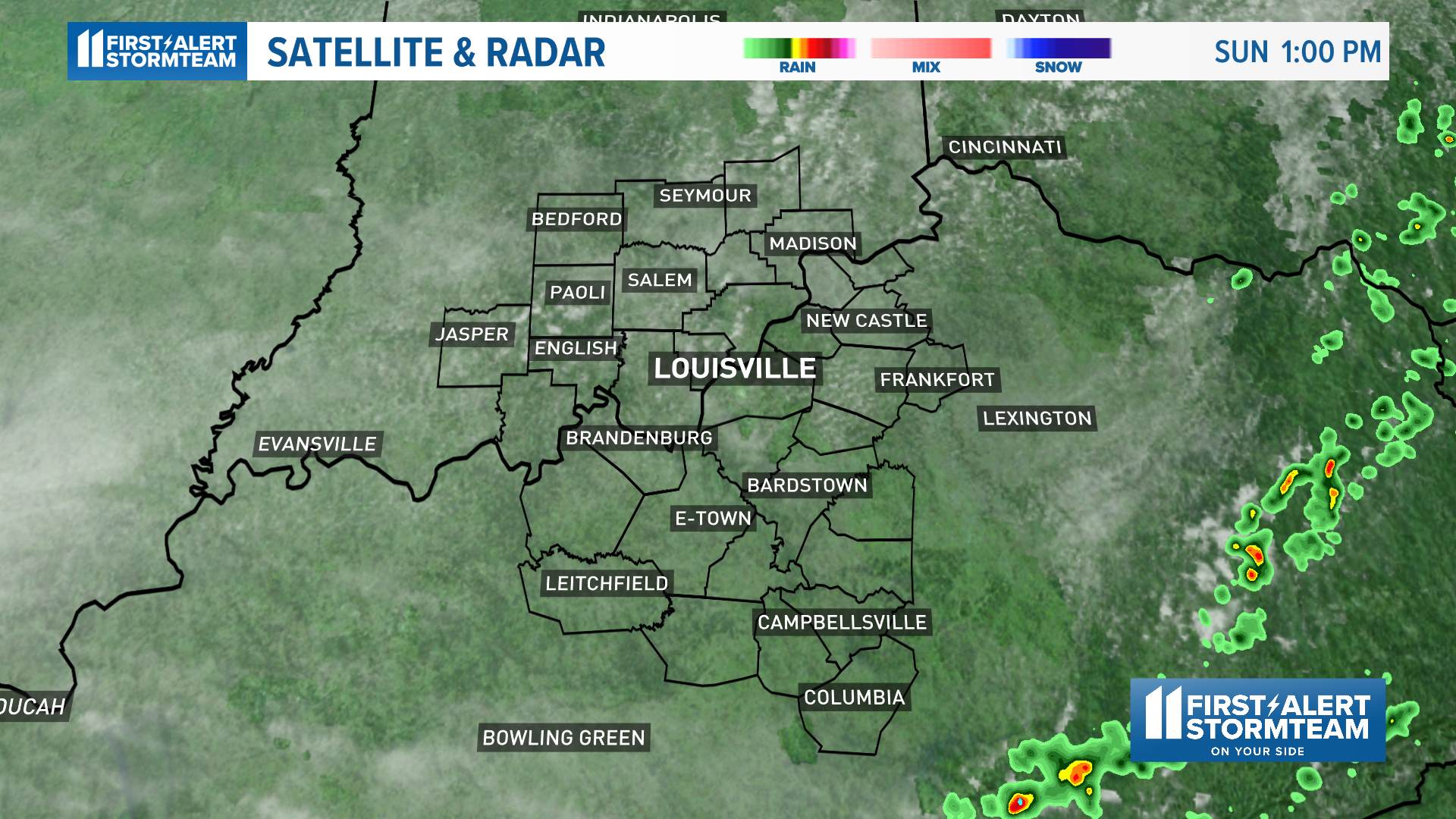Louisville Weather Radar Overview

Louisville weather radar is an essential tool for monitoring and predicting weather patterns in the Louisville area. It provides real-time data on precipitation, wind speed and direction, and other weather conditions, helping meteorologists and emergency responders make informed decisions.
The Louisville weather radar provides an up-to-date look at the weather conditions in the area. If you want to see a more comprehensive view of the weather patterns, you can check out live weather radar. This tool allows you to zoom in on specific locations and track the movement of storms and other weather events.
By using the Louisville weather radar in conjunction with live weather radar, you can stay informed about the weather conditions in your area and make plans accordingly.
The first weather radar system in Louisville was installed in 1957 at Standiford Field. This system was a relatively simple device, but it was able to provide valuable information about the weather in the area. Over the years, the Louisville weather radar system has been upgraded several times, and it is now one of the most advanced systems in the country.
As the skies above Louisville dance with uncertainty, the Louisville weather radar keeps a watchful eye, its sensors probing the atmosphere for signs of approaching storms. In the distance, a flicker of concern emerges, where the fury of Hurricane Beryl rages.
Hurricane Beryl Live brings us up-close to the tempest’s wrath, offering a sobering reminder of nature’s untamed power. Yet, even as the storm rages, the Louisville weather radar stands vigilant, its gaze unwavering, safeguarding the city from the whims of the weather.
Technology and Equipment
The Louisville weather radar system uses a variety of technologies to collect and process weather data. The system includes a transmitter, a receiver, and a display unit. The transmitter emits a beam of electromagnetic energy, which is reflected back to the receiver by precipitation and other objects in the atmosphere. The receiver then processes the reflected energy and creates a map of the weather conditions in the area.
Louisville Weather Radar Data Analysis

Louisville weather radar data is a valuable resource for meteorologists and researchers. It provides detailed information about the weather in the Louisville area, which can be used to forecast future weather conditions and track storms.
The Louisville weather radar is a Doppler radar, which means that it can measure the velocity of precipitation particles. This information can be used to determine the direction and speed of storms, as well as the intensity of precipitation.
Data Collection
The Louisville weather radar collects a variety of data, including:
- Reflectivity: This is a measure of the amount of precipitation in the atmosphere.
- Velocity: This is a measure of the speed and direction of precipitation particles.
- Spectrum width: This is a measure of the spread of the precipitation particle velocities.
Data Processing and Analysis, Louisville weather radar
Once the data is collected, it is processed and analyzed to create a variety of weather products. These products include:
- Radar reflectivity maps: These maps show the amount of precipitation in the atmosphere.
- Velocity maps: These maps show the speed and direction of precipitation particles.
- Spectrum width maps: These maps show the spread of the precipitation particle velocities.
Data Usage
Louisville weather radar data is used in a variety of ways, including:
- Forecasting: Radar data can be used to forecast future weather conditions. For example, meteorologists can use radar data to track the movement of storms and predict when they will arrive in a particular area.
- Research: Radar data can be used to study the behavior of storms. For example, researchers can use radar data to track the development of tornadoes and hurricanes.
Louisville Weather Radar Applications
Louisville weather radar technology has diverse applications in various sectors, providing valuable information for decision-making and enhancing public safety. Its versatility extends to fields such as aviation, agriculture, transportation, and emergency management, contributing to the overall well-being and efficiency of the Louisville community.
In the realm of aviation, Louisville weather radar serves as a crucial tool for pilots and air traffic controllers, enabling them to navigate safely through adverse weather conditions. It provides real-time updates on precipitation intensity, cloud formations, and wind patterns, allowing pilots to make informed decisions regarding flight paths and potential hazards. Moreover, weather radar data assists air traffic controllers in optimizing airspace management, ensuring the smooth and efficient flow of aircraft.
Agriculture
Louisville weather radar plays a vital role in the agricultural sector, empowering farmers with timely and accurate weather information. By monitoring precipitation patterns, farmers can optimize irrigation schedules, reducing water usage and maximizing crop yields. Additionally, weather radar data helps farmers anticipate potential weather events such as hailstorms or frost, enabling them to take necessary precautions to protect their crops and livestock.
Transportation
In the transportation sector, Louisville weather radar enhances safety and efficiency by providing real-time updates on road conditions. By tracking precipitation and visibility, transportation authorities can issue timely warnings to motorists, advising them of potential hazards such as icy roads or reduced visibility. Moreover, weather radar data assists in optimizing traffic flow during inclement weather, reducing congestion and minimizing travel delays.
Public Safety and Emergency Management
Louisville weather radar plays a critical role in public safety and emergency management, providing essential information for disaster preparedness and response. During severe weather events, weather radar data helps emergency responders anticipate the path and intensity of storms, enabling them to issue timely warnings and evacuate affected areas. Additionally, weather radar assists in damage assessment after storms, facilitating efficient recovery efforts.